Your turn
We have just witnessed extraordinary prices paid by commercial farmers for breeding bulls. The lift in farm gate beef prices has been an exciting ride. The lift has been enough to cover the 32% rise in farm operating costs over the past several years, and some left over to improve the bottom line. It does remind me of my father saying that, in his day, “farmers spent their wool money on bulls. That was in the era when agents took their clients to wool auctions to watch their crutchings sold”!
Meanwhile lamb and mutton prices have been sneaking up too, the magic $10/kg available for lamb this spring. These prices will flow on into the new season to the benefit of store lamb producers. High performance sheep will once again underpin hill country returns. Breeders will get a turn, a better share of these improved prices, and a better balance with finishers.
The period 2026-32 is predicted to be one of stable costs and rising prices. In the longer term, world meat consumption is forecast to increase by 50% by 2050.
The pendulum has swung
You’ve all endured a pressure cooker of low prices and rising costs over the past two years. There are three ways to improve profit per hectare:
-
More kg product per hectare.
-
More $/kg.
-
Reduce costs.
It has been a time to analyse the cost/benefit of every input in your farming business. Ram purchases are not a big cost item, but….
What is Wairere doing to help your bottom line?
-
- Nudie sheep. Using Multiple Ovulation Embryo Transfer and artificial insemination to import a large selection of bare hair sheep genetics from the UK and Ireland…targeting our mission of “making your sheep farming easier and more profitable”.
- Cost of your rams. Trucking rams to Northland and Otago to take out the cost of travel and time for both you and your rams.
- Hogget lambing. Wairere has mated all hoggets since 1966. And lambed hoggets unshepherded for sixty years.
- Commercial testing ground. Over many decades Wairere has run a high stocking rate on medium to steep hill country. It’s a “survival of the fittest” regime.
- Global testing ground. Wairere genetics have been tested and won accolades in Australia, UK, France, Germany and South America.
- Early lambing. Wairere Romneys mated in January and February are docking up to 170% in Northland. Romneys used to be considered as seasonal breeders.
- Composites. Wairere has experimented with other breeds since 1969, but always found that our Romney outlasts competing genetics.
- Terminal sires. Breeding a type of ram which has better longevity than the average terminal ram, breeds fast growing, high yielding progeny, and throws a dark head for easy identification. And breeding Dudies to give you terminal sired lambs which don’t need shearing until at least eight months old.
- Wool income. Investing in wool beyond the farm gate, trying to accelerate the adoption of new technology.
- The parasite challenge. Working on breeding sheep resistant/resilient to internal parasites.
What can you control?
KgDM/ha Wairere in June was plagued by Porina, up to 28 caterpillars found in a spade spit. We have sprayed the whole farm, for the first time in many years. There is always some competitor after a free lunch.
Fertiliser is the main lever for feed quantity and quality in hill country. Fertiliser cost rises have been savage over the past four years. DAP was 60% of the current $1,415/tonne cost in 2021. The early July AgLetter analysed fertiliser/aerial spreading costs at 14% of gross farm revenue in 2025, versus 10% in 2021. What is the best fertiliser policy to optimise profit?

The new technology of Techno grazing with collars can help to optimise pasture growth and enable more cattle to be run per hectare. Can this collar technology be miniaturised into a sheep ear tag? That would reduce the huge maintenance and capital cost in traditional fencing.
Feed conversion efficiency. Early this year a Beef and Lamb field day at Matt Walker’s farm near Pahiatua highlighted the progress that Matt has made with improved grazing management, and a change to Wairere genetics. In four years a lift in the weight of weaned lambs from 102,000kgLW to 137,000kgLW was achieved. At $4/kg that’s an extra $140,000 from the same number of ewes.
Cost of Production. How do we do more with less? Bigger scale reduces fixed costs per stock unit; variable fertiliser spreading reduces overall cost; use of contractors or casuals is usually cheaper than permanent employees; adopt simple systems, such as all sale lambs sold at weaning; farm no wool sheep, or shear once per year rather than twice.
Value of product. We supply a world market where prices are set by supply and demand, competitors and substitutes. There are several ways to be paid more than the standard schedule price for lamb, mutton and wool.
One is the negotiating strength of large scale supply.
A second is year round supply for chilled lamb within specifications for weight and grade. Atkins Ranch has been paying juicy dividends to shareholders as well as a premium to suppliers. Many suppliers are also sharehholders.
A third is supplying branded product with claims of enhanced eating quality and human health benefits.
The second and third categories come at an increased cost on farm. The premium has to more than cover the cost.
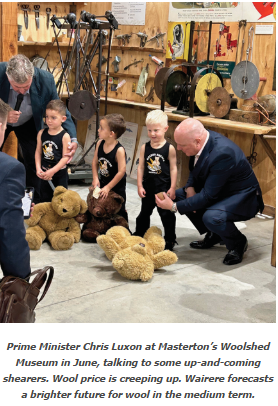
A fourth is a premium earned from buyer recognition of superior genetics in store lambs, ewe lambs sold for breeding, surplus five year and two tooth ewes.
Where are Wairere genetics headed?
- From experience of more than fifty years at Wairere breeding two, three and four breed composites, our conclusion is that Wairere Romneys are hard to beat. Commercial farmers may outcross for some years, but they usually have to revert to Romney rams for constitution, structural soundness, and to improve productivity. Wairere has 8,600 Romney ewes and ewe hoggets recorded with Sheep Improvement Ltd.
- That tally of 8,600 includes 1,700 ewes and 600 ewe hoggets bred for resilience to FE, with sires tested at 0.6 sporidesmin. In February this year we tested 47 ram lambs, with 35 passing at 0.6, 11 slight, 1 moderate.
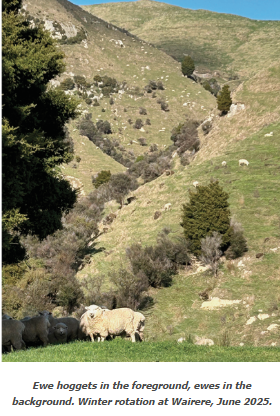
-
- Ram breeding is a balancing act between outright high performance and restricted feeding. Wairere has run a high stocking rate for decades, often the highest in the local Alfredton Farm Discussion Group. A high sheep to cattle ratio, mating all ewe hoggets, and mob grazing have all put pressure on ewes, lambs and hoggets to perform under commercial pressure. That’s why Wairere sheep shift well.
- A recent Countrywide article profiling a group of Southland/Otago farmers mating ewe hoggets at an average weight of 50kg has sparked debate at Wairere about hogget lambing. Is a 50kg ewe hogget in early May a feasible target for a hill country farmer? Is it worth mating hoggets to wean small twin lambs which may take too long to finish on permanent pasture, or are of lower value on the store market? Recent feedback from a commercial farmer described his scanned dry ewe hoggets as scanning 146% as two tooths versus 169% for those which preg scanned in lamb. The use of harnessed teaser rams is a worthwhile screening process to cull hoggets which don’t take the ram. Wairere has been mating all ewe hoggets since 1966, and keeping only those pregnant since 2005 (confession: 1500 scanned dry ewe hoggets have been kept over the past twenty years, and around 42,000 in lamb). Average live weight at start of mating has been 41-42kg, just 40kg with wool weight deducted. So Wairere isn’t doing hogget lambing as well as some of our clients, BUT we are selecting the best genetics for Your Future.
- Easycare lambing starts with our hoggets, which are lambed unshepherded. Any ewes assisted or with bearings are culled, as are their progeny.
- High growth rate has had a higher weighting in the Wairere index than the standard SIL index. NLB (number of lambs born) is significantly lower weighted, targeting more twins and fewer triplets. I’ve always recommended a 70kg ewe rather than a 60kg ewe. Your maternal flock should be capable of producing 18-25kgCW lambs. Our highest value kill sheet was for 35.9kg ram hoggets killed in October 2012 for $294 average.
- No wool sheep? Wairere Nudie numbers are expanding rapidly. There won’t be the same scarcity factor this coming season. As with any innovation, commercial farmers are trying a range of potential outcomes, some breeding rapidly towards hair sheep, some using Streakers to breed quarter Nudie females for lower dagging and crutching time and cost. And variations in between. Shearing once per year rather than twice is a target too. Last year Brazilians (3/4 Nudies) proved to be 78% bare enough as hoggets to not require shearing. We recommend Brazilians as a good entry point for lower or no wool sheep. Hayden Woolley in the UK told me that “My perfect sheep would be a Wairere Romney with no wool. Your Romneys have better constitution to handle difficult seasons”. We have taken note of Hayden’s comments and will be looking for the best Brazilian and Streaker rams to blend into the ultimate Wairere Nudie.
We are also breeding more FE resilient Nudie/ Wiltshires in Northland this spring. Scott Innes has farmed Wiltshire sheep in a hot FE environment for sixteen years.
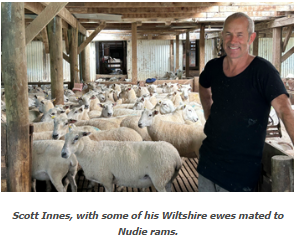
Don’t bark at every passing car…but check out all these passing cars:
-
The government is still borrowing more than a million dollars per hour to prop up an unsustainable economy.
-
The socialist government of 2017-23 was all about power and control, making New Zealanders more and more dependent on government and less and less self reliant.
-
Government’s share of GDP has risen from 36 to 44% since 2017. Private enterprise has been shrinking fast.
-
Bureaucracy is becoming more and more entrenched. A huge clean out is required. There is so much wastage of taxpayer and ratepayer money
-
All District and Regional Councils have become bloated and should be absorbed into unitary councils.
-
Forestry consultant John Turkington was taken to court by Horizons Regional Council on twenty charges of logging malpractice. John won on all twenty, but it cost him $2,000,000, and a lot of time and stress. Should ratepayers have to foot the legal bill for Horizons?
-
The Dutch government has put new words around ESG, changing from Environment Social Governance to Energy Security Geostrategy. The days of being “kind” simply offered New Zealand for takeover. Foreign control of assets in New Zealand increases every week. Instead of changing New Zealand to Aotearoa, how about New Asia?
-
Lifting the minimum wage 48% in seven years has forced a lot of businesses into bankruptcy. Employers are compelled to create businesses which don’t need people, such as self service fuel stations. Farmers are employing fewer staff.
-
Productivity isn’t everything, but it is almost everything.
-
The pine tree scam. Is every carbon credit double counted? Once by Ikea, for example, also by the New Zealand government? New Zealand is bullied in international trade negotiations. New Zealand is easily carbon positive if the sequestration of CO2 by native bush and pasture is counted.
Sheep farming economics
The general trend in sheep breeding over the past thirty years has been a reduction in stocking rate per hectare and an increase in per head performance. Is there a way to reverse that trend?…increase stocking rate and increase kgs of product per hectare with little increase in cost?
Derek and Elsje Neal, Wairarapa. Derek sadly died of cancer in 2023, but his analytical approach to farming was a huge contribution to Wairarapa farmers. He initiated the Wai Knotz farm discussion group and facilitated it for many years.
Derek’s own farming enterprise evolved to three farms, from all hill country to 24% finishing land. Derek was using Border/Romney rams from Wairere when he won the Wairarapa Farmer of the Year in 1997, but then chose to go composite from another ram breeder.
The composite ewes couldn’t stand the pressure of a high stocking rate, so Derek reverted to Wairere Romney rams for his last twelve years of farming. He maintained 12su/ha on the hill country, running ewes at 60kgLW but achieving 151-152% lambing with the aid of Ovastim. Lambs were trucked to f inishing country at weaning or later, and were killed at around 19kgCW. Cattle were all bulls, running 700-900 per year. Some years grazing cows were brought in to tidy up pastures.
With this system he sold 315-325kgCW per hectare, achieving an EFS of $750-$1,025/ha from 2017-2020.
Mark and Susannah Guscott, Wairarapa, won the Greater Wellington Ballance Farm Environment Supreme Award in 2025. On 1400ha effective the sheep enterprise grosses around half farm revenue from a mix which includes a centre pivot with specialist crops, beef cows and finishing cattle, and a luxury lodge.
Mark supplies 12-14,000 lambs per year to Atkins Ranch, and is a director of the company that his father Phil started in 1989 with John Atkins. A supply premium is sometimes bolstered by an extra premium for Savory Regenerative produced wool, woolskins, or pet food. Mark runs around 1,800 ewes, bought in from Wairere ram clients. And many of the purchased lambs are also of Wairere breeding.
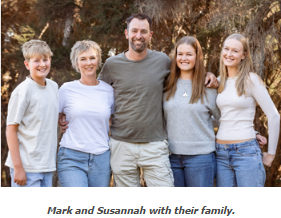
Colin and Judy Lawrence, Wairarapa “In 1982 we moved from managing a farm next to Wairere to leasing 269ha nearer to Masterton. We bailed the stock and progressively purchased them over the lease period. In 1990 we were given the opportunity to purchase the farm. With good fertiliser input and electric fence subdivision we were able to run 3,000su on 260ha effective. We also leased a farm nearby, which gave us a total of 610ha effective, running 4,600 ewes, 1,250 ewe hoggets, some winter trading lambs, and steers for pasture control.
Using Wairere Romney genetics we peaked at 149% and 29kg lambs weaned at 90 days. Male lambs were sold store before Christmas, to a repeat buyer who was prepared to pay a premium for our consistent product.
In 2006, we sold the 269ha farm for $1.9m. This opportunity provided us with a challenge, a great lifestyle, and set us up for retirement.
Wairere has just purchased this farm, part of 881ha bought this year. This will enable Wairere to bring some ram breeding flocks close to home, twenty minutes from Wairere.
John and Nicky Wallace, Southland. “I’ve been using Wairere Romney rams for twenty five years. My ewes consistently lamb 155%, 154% in the horrible spring last year. That consistent performance has encouraged some neighbours to switch to Wairere. But I was getting stale with the kids having left home, and Nicky working off farm in the local veterinary practice.
So Nudies came at the right time for me. In 2024 I selected 400 high BCS mixed age ewes to put to Nudie rams. They docked 181%. I was impressed with lamb survival, and the 20.1kg carcass weight of the first draft in late January, 20% of the male lambs and at the same weight as the terminal sired lambs of the same age.
The Streaker lambs didn’t look big, but they yielded well.
I’ve just scanned 2550 ewes, another 400 of those mated to Nudies, only 24 dry. Under 1% barren is normal. And will scan the Streaker hoggets at the end of July. I don’t normally mate hoggets, but want to accelerate the transition to a Nudie flock and a low work load.”
Richard and Jenni Brewer, Taranaki. “We farm 450ha in coastal South Taranaki with 205 dairy cows, 300 beef cattle, no till maize silage and chicory and 2300 Wairere ewes on the hill. My brother William and I started buying Wairere rams in 1988, switching from Romneys to Challengers fifteen years ago when FE became a bigger issue. We consistently lamb at 150% plus, and were one of the first suppliers to Richard Redmayne’s Coastal Spring Lamb. I use my own CrossSlot direct drill to sow chicory in late October, and start grazing it with lambs in early December, at 40 lambs per hectare. The second batch of lambs run at 20 per hectare. In early April I spray out the chicory and direct drill annual ryegrass on the same day. I have used this system for years, achieving lamb growth rates of 350-380g per day.
Lambs averaged 22kgCW this season, despite a savage drought which prompted feeding barley to the ewes and 70% supplementary feeding of our dairy cows from February to April.”
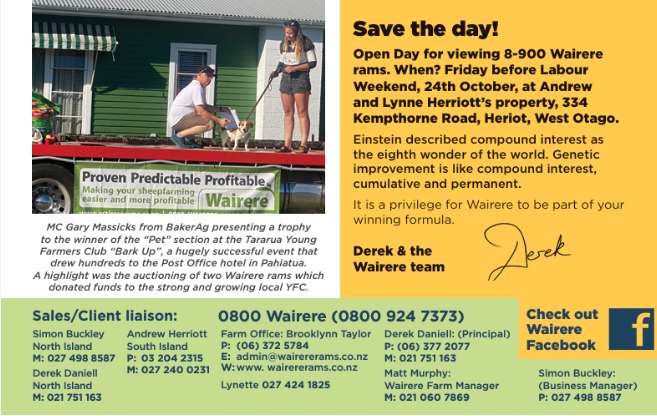
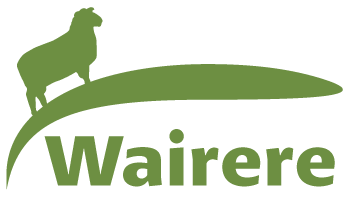
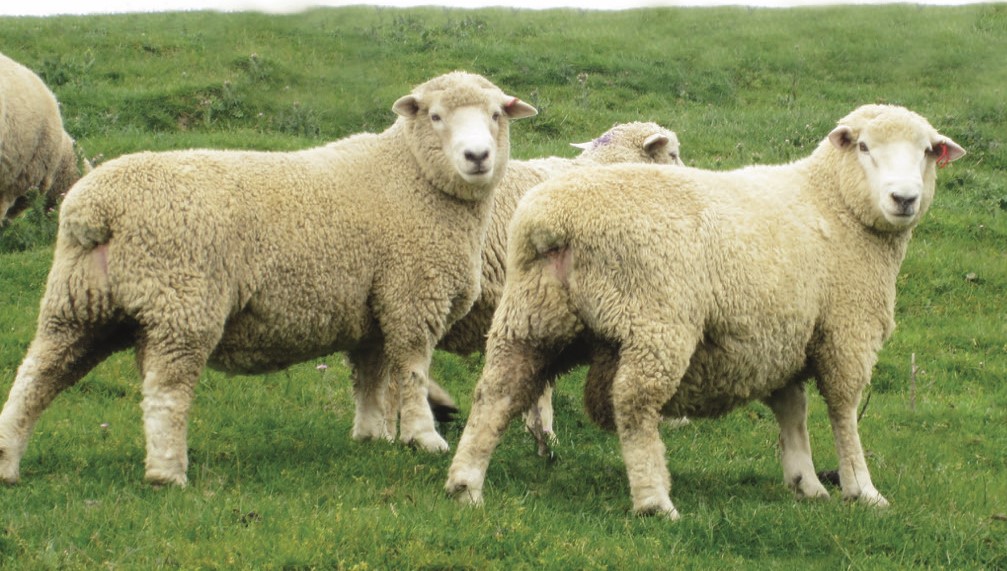

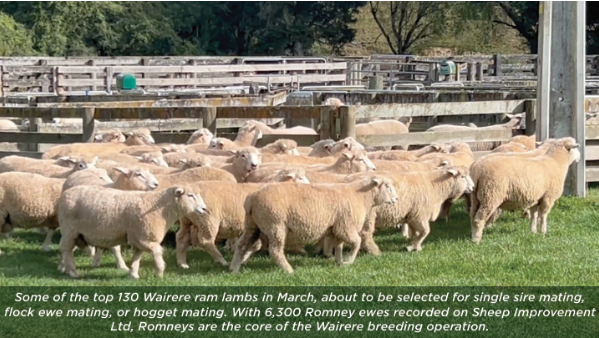
Recent Comments